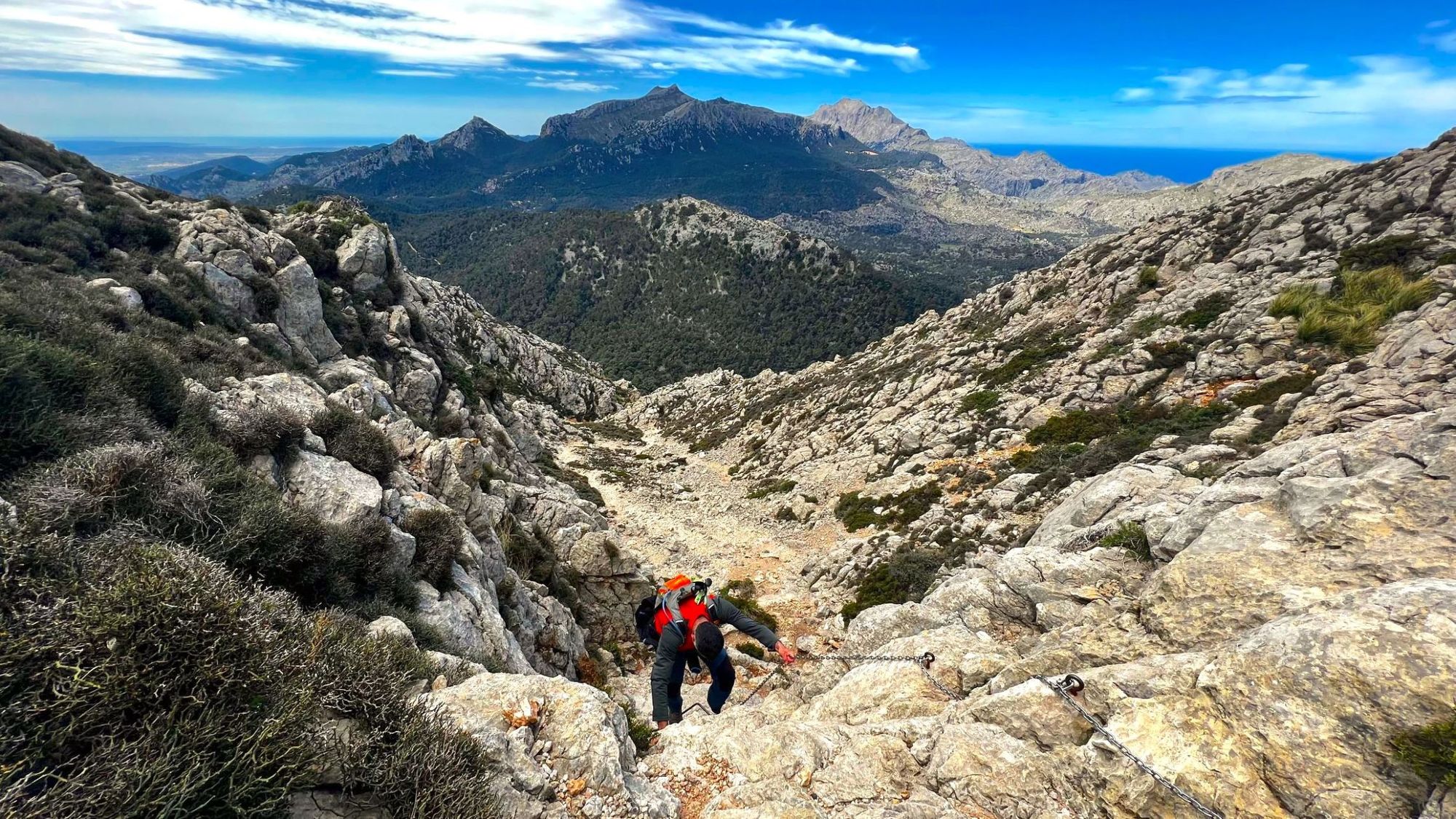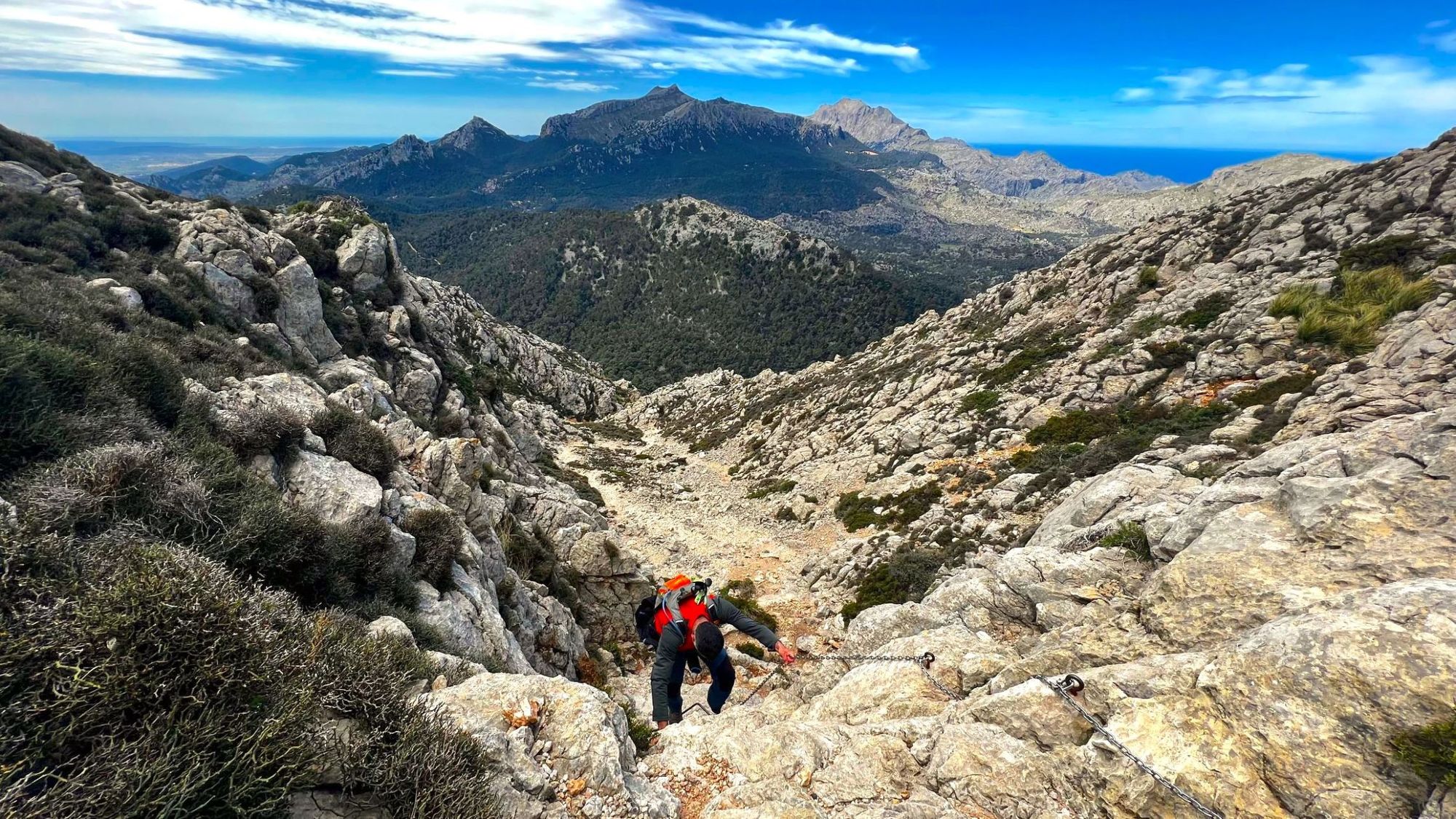
A narrow trail weaves through a rugged section of exposed, limestone rockface. The ridgelines of the Serra de Tramuntana pierce the gentle blues of the sky behind, while the sun sends sparkles dancing across the deeper, darker shades of the western Mediterranean Sea, which is visible in almost every direction from the mountain tops. Below, Aleppo pine trees, Balearic holm oak woodland and wild olive scrub sprawl across the foothills - and there’s not another hiker in sight.
“Even I was surprised by the landscape when I first came here,” says Spanish mountain guide José Miguel Real, who leads tours on the island. “No mass tourism, no people - and it’s a mountain range which reaches 1,300m above sea level, so the views across the ocean are incredible; as is the gastronomy.”
It's very different to the idea that people have of Mallorca...
This is Mallorca - famed for its beach resorts and ‘fly and flop’ clientele - but the future of tourism here is not sangrias and sun loungers. It's nature-based.
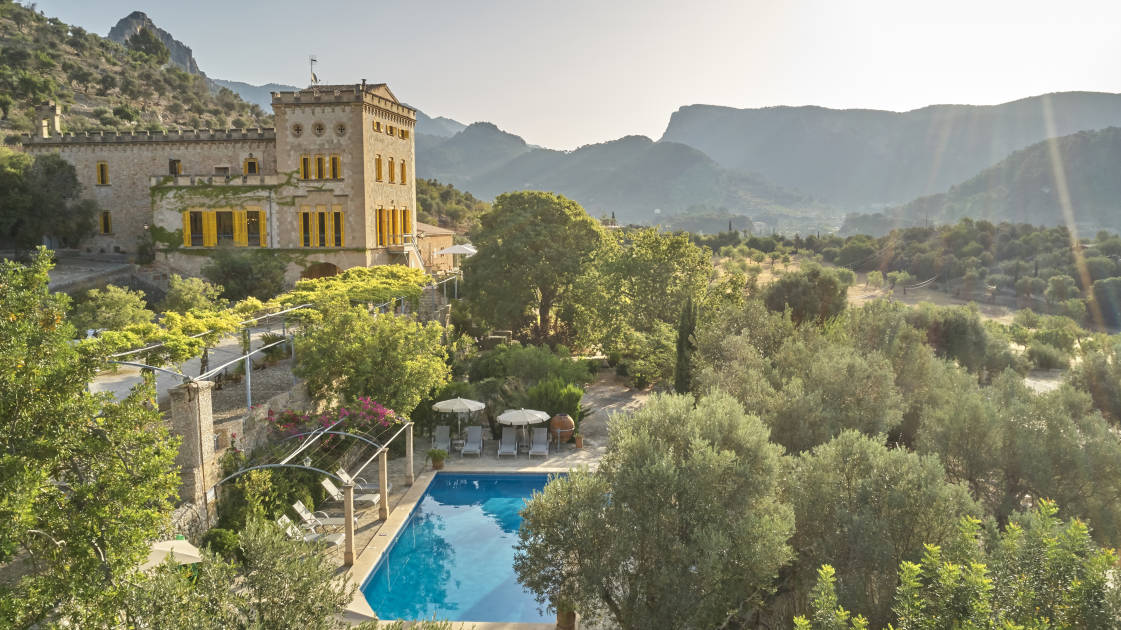
Mallorca is the largest of the Balearic Islands, a Spanish archipelago sitting in the sunny Mediterranean. In the early 20th century, the island was a peaceful haven. In 1922, the Spanish painter, poet and playwright Santiago Rusiño visited and wrote of “an island where there is always calm, where men are never in a hurry, where women never get old, where they don’t waste themselves not even words.”
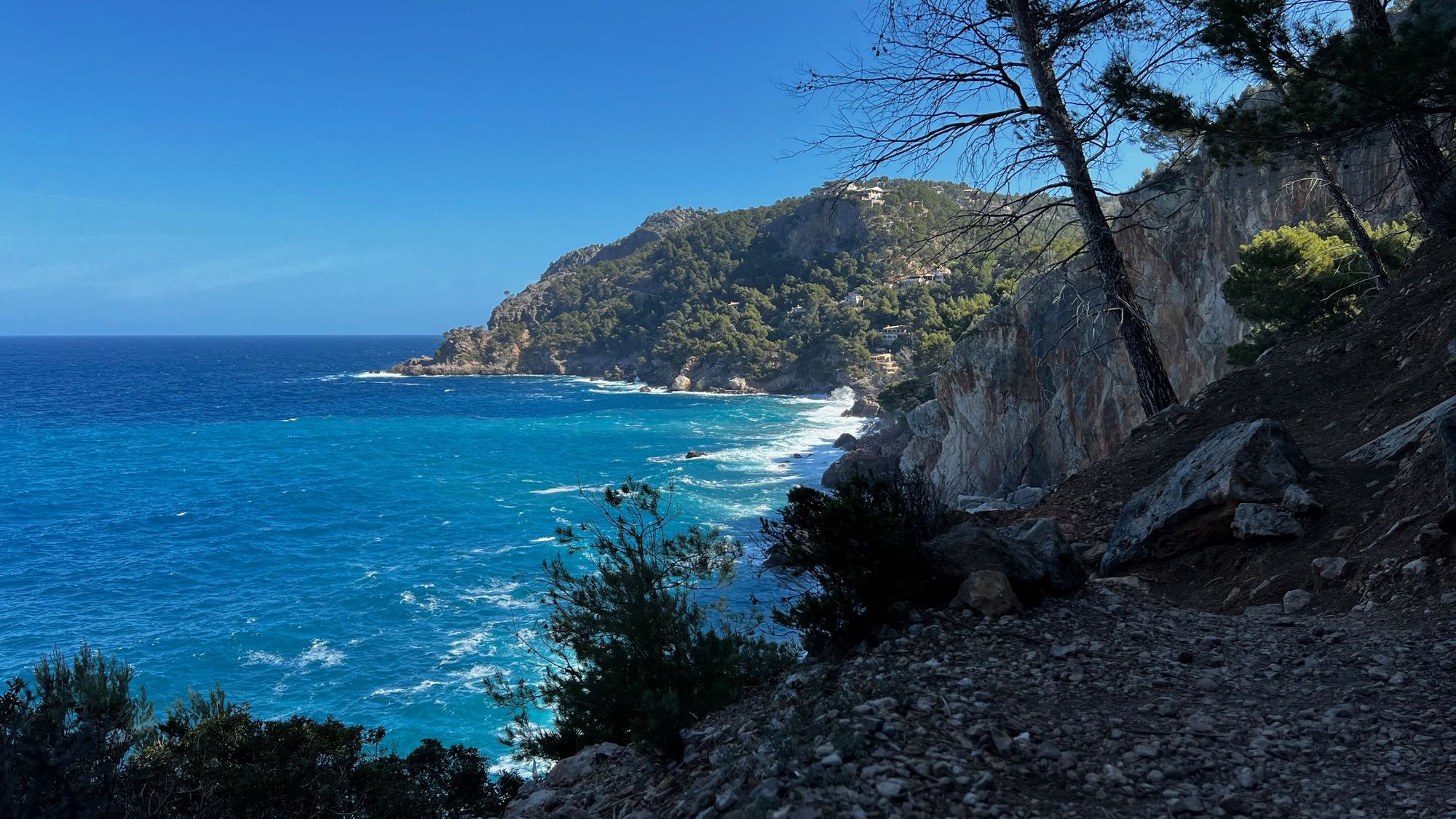
Tourism to Mallorca boomed in the 1950s and 60s as the Francoist dictatorship looked to tourism and beach development to bring in revenue. This led to a building boom in the following decades as the island sought to cater for the mass numbers coming in to enjoy the sun.
As a 2021 study from the University of the Balearic Islands then tells it, “quantity prevailed over quality and the island became a low-cost seasonal mass tourism destination.” The term ‘Balearización’ was even coined to describe a destination where overtourism is running rampant - prioritising profit over planet and dampening the quality of local life, not just by exceeding the carrying capacity of hotspots, but causing the cost of living to rise, leading to higher congestion, pressure on resources “and the dismantlement of socio-cultural connectivity.”

Tourism leakage was a significant problem. “Tourists mainly arrived on high-season package tours, staying in specific areas of the island,” reads the study. “In order to attract and accommodate them, tourist resorts were developed with hotels and amenities for them [...] Very few tourists strayed beyond their hotel or the local vicinity.” And so, benefits for the local economy were limited. This form of tourism brought employment for locals - but it was low-skilled and low wage.
In the 90s, airport capacity doubled in Mallorca, while short-term rentals boomed, creating a housing bubble. After the 2008 financial crisis this became a particularly big issue, and locals found themselves being priced out. By 2017, the Economy Circle of Mallorca, a private institution that conducts debates and studies on the island, wrote: “there are objective reasons to think that Mallorca is on the way to dying of success due to the massive influx of visitors.”

In 2019, 14.8m tourists visited Mallorca in 2019; an island of 3,640 km² with a population of under one million people. The vast majority of those tourists were concentrated in small areas (notably the capital, Palma). The result was local water shortages, waste management problems and a rise in local pollution.
Local opinion was clear - a move away from Balearización was needed. Then the pandemic hit, and that visitor number dropped by 80%. Locals, the University of the Balearic Islands write, viewed the stoppage as “an opportunity to reinvent tourism and to move toward a much environmentally-friendlier model.”
Amongst their strategy to do so, is an idea of “dispensing with binge tourism and, instead, fostering the demand for tranquillity, nature and scenic tourism."
There are all these small coves too, with crystal clear water and dramatic cliffs along the routes...
The Serra de Tramuntana mountains are protected as a UNESCO World Heritage Site. Listed as a landscape of cultural importance, they have been shaped by millenia of agricultural work, which has, UNESCO write, “transformed the terrain and displays an articulated network of devices for the management of water revolving around farming units of feudal origins.” Agricultural terraces are dotted around the landscape, often connected by ancient stone walkways.
“The mountain range forms the spine of Mallorca,” José tells me. “The range is named after a northern wind, called the Tramontane. It divides the island."
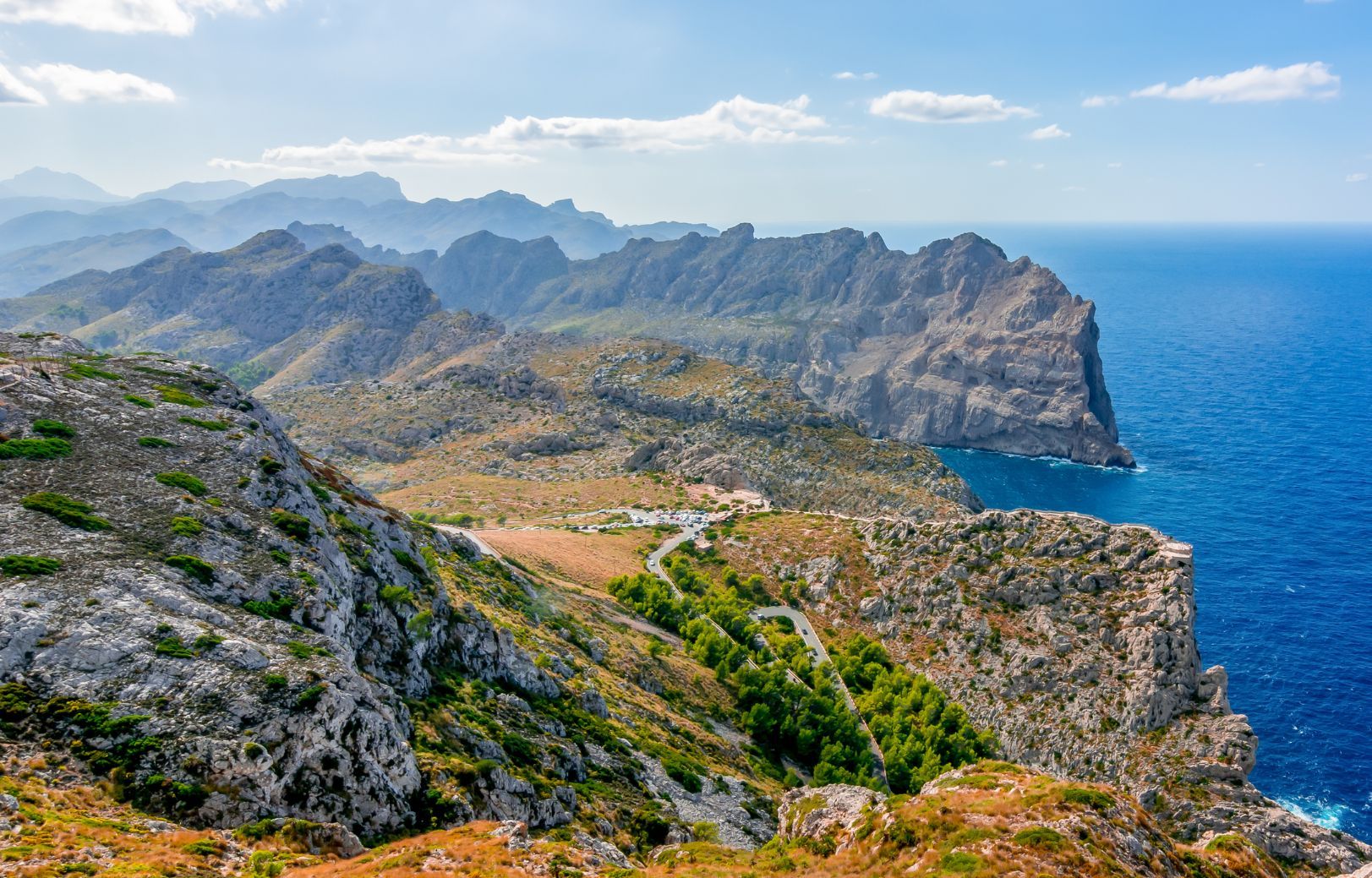
“The trails here are connected with centuries of culture - it’s of great importance. The tracks were built with Pedra en Sec - which means 'dry stone' - by the people who arrived on the island so many years ago. They are perfectly built.
"It's like travelling to the past when you are walking in these mountains. You feel like you have gone back in time, and you’re there with the shepherds, building these narrow stone trails. It's just incredible. Then, of course, there are all these small coves too, with crystal clear water and dramatic cliffs along the routes.”
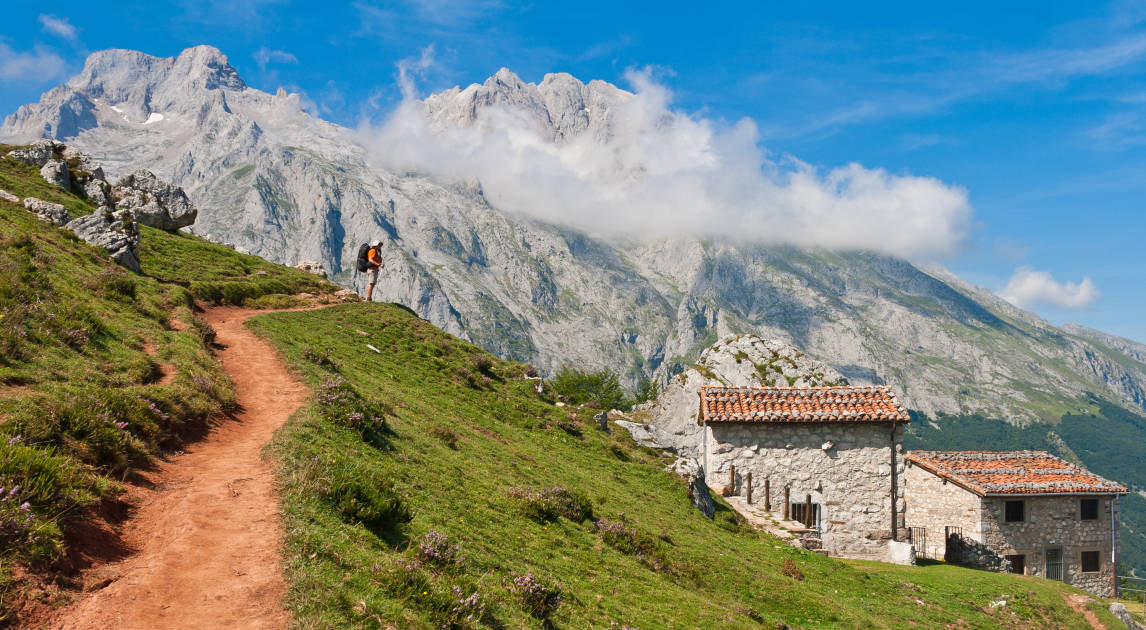
José grew up climbing in the Picos de Europa National Park, in the north of mainland Spain, and he also still guides there extensively. “The mountains in Mallorca are limestone,” he says, “which is very similar to the Picos de Europa. Obviously the vegetation and forests are very different, but there is a great variety of options - from easier routes to more technical routes.”
A walk around the Formentor lighthouse at the northern end of the island leads to a silent swim spot at Cala Murta, while one of the most intrepid routes is the Three Peaks of the Tramuntana walk - a circular, six-hour day hike which involves climbing Sa Rateta (1,113m), Na'Franquesa (1,067m) and Puig del’Ofre (1,093m) - to hard earned panoramas of the entire island.
“It's very different to the idea that people have of Mallorca,” laughs José.
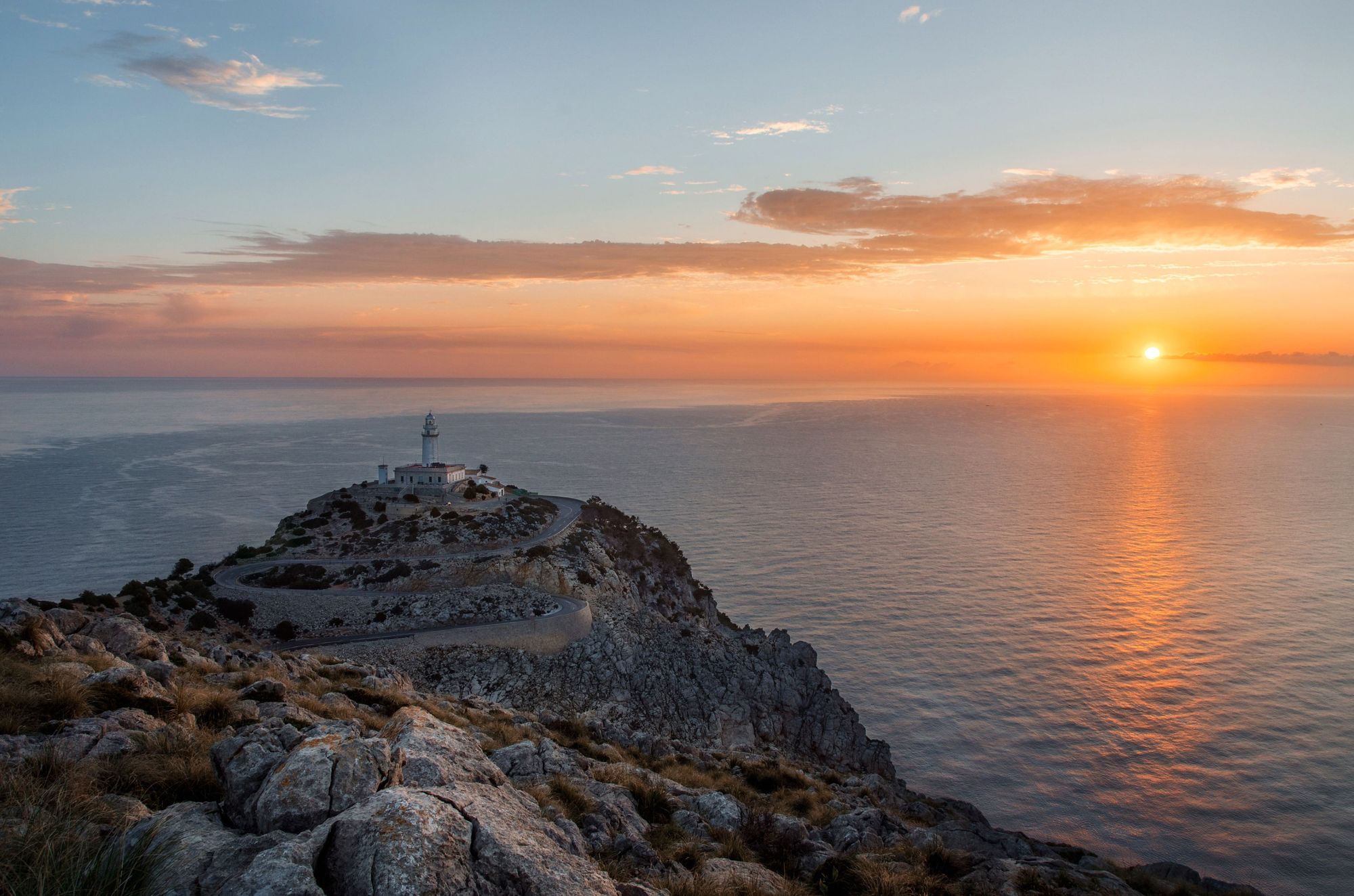
In between days of hiking, visitors can stay in stunning agriturismos, directly benefiting locals and their suppliers, or explore the vibrant mountain towns.
“There’s Deià, where the writer Robert Graves decided to spend the last days of his life,” José says. “We have Valldemossa, with cobbled streets, which is famous also for a famous cake; coca de patata, which is amazing. So it's a real mixture of experiences. It's not only natural beauty - this place is very connected to the culture and history of the people and the island. Every single agriturismo will offer hiking routes or yoga sessions or cycling options.”

The idea of shifting away from beach-and-beer tourism is part of a grander plan laid forth in the Balearics since Covid - the lead being a new circularity law for tourism, which will aim to reduce waste and consumption, delay construction until 2026, decarbonise energy systems and require all tourism businesses to have a long-term circularity plan. The shift is backed with £55m from local government, and also aims to cut leakage, making tourism truly work for locals.
Now they are trying to attract another kind of tourism, interested in nature and culture and gastronomy...
Hotels will not be able to increase capacity, and cruise tourism will be reduced.
I ask José if he thinks nature tourism could ever truly topple the more traditional form. “Absolutely,” he says, without hesitation. “Even in April and May now the island is full of cyclists, exploring the narrow roads and mountain passes.
"In the past, the Spanish government only promoted Mallorca as a place for ‘everything under the sun’ - so not just beaches but nightlife as well, but now they are trying to attract another kind of tourism, interested in nature and culture and gastronomy - and they can extend the season by doing so.”
The stunning Serra de Tramuntana mountains are set to have a starring role, as Mallorca strives to ditch disruptive mass tourism - and become the world’s first circular destination, supporting culture, communities and landscapes.
Inspired? Check out our hiking and yoga adventures in Spain now!

